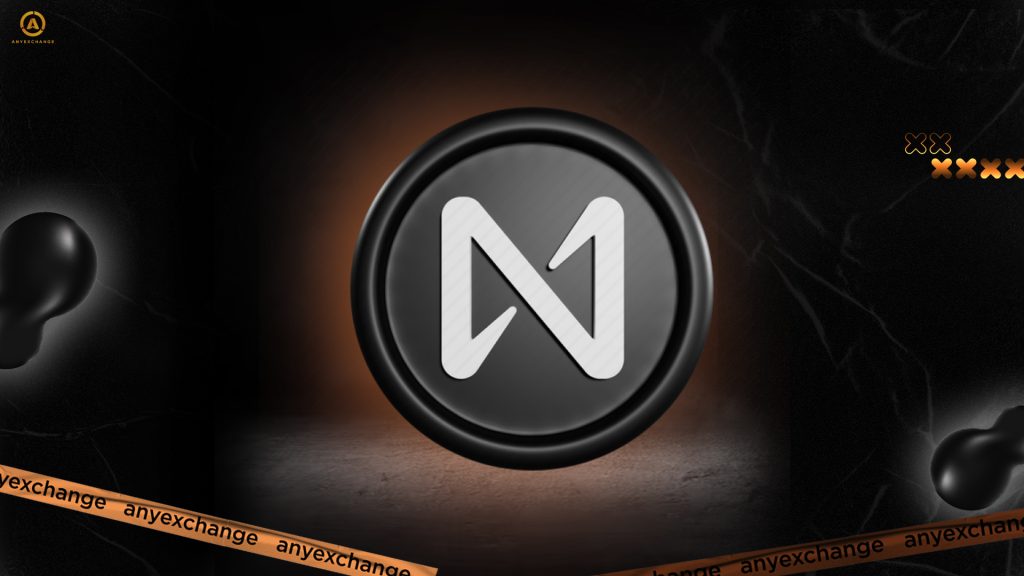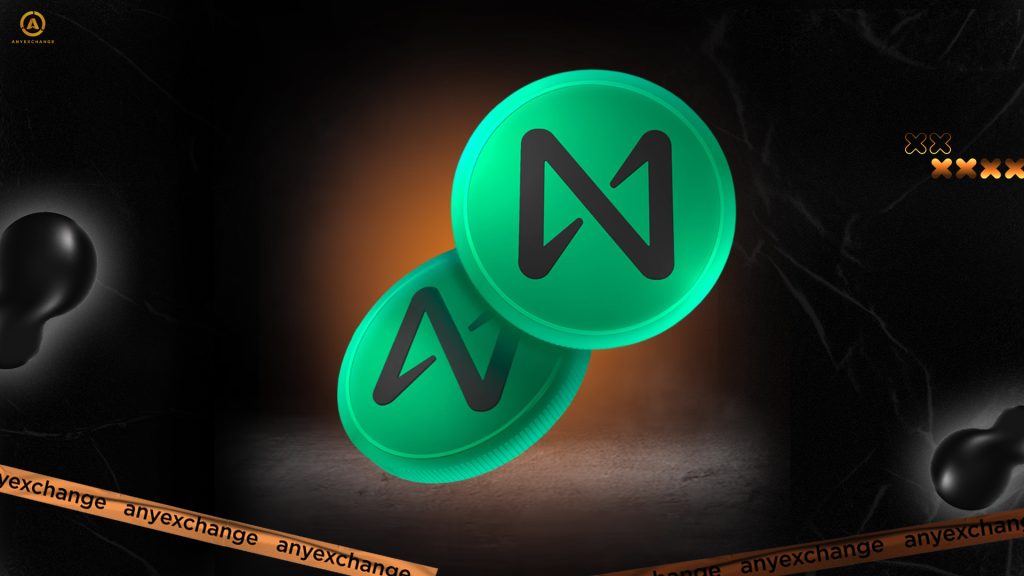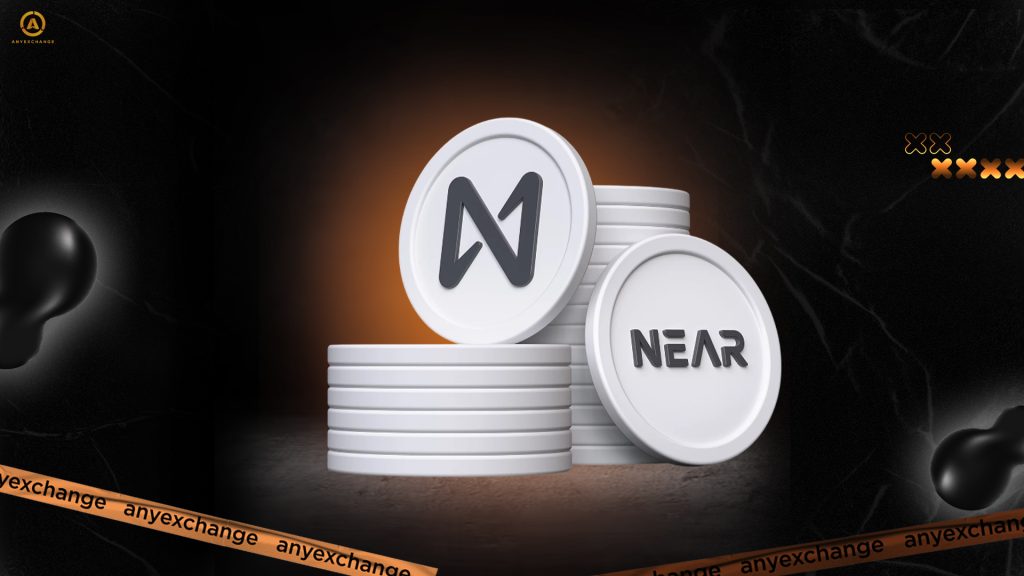
The NEAR Protocol is a next-generation blockchain platform designed with a focus on Web3 infrastructure and broad integration with artificial intelligence (AI) technologies. Designed from the ground up for developers and users, NEAR offers high performance, low fees, and ease of use. NEAR combines innovation with practical scaling solutions, including the unique Nightshade sharding technique and an eco-friendly Proof-of-Stake consensus mechanism.
NEAR was founded by Ilya Polosukhin and Alexander Skidan, engineers with strong backgrounds in distributed systems and artificial intelligence. Their knowledge and skills formed the basis for integrating AI into the blockchain environment, giving NEAR a special place among its competitors.
This article takes a detailed look at the NEAR cryptocurrency and its platform’s key technologies, ecosystem, opportunities, and risks, and assesses the project’s prospects in 2025.
What is the NEAR Protocol?

It is a high-performance Layer-1 blockchain launched in 2020 by the NEAR Foundation team. Created in response to the limitations of early networks such as Ethereum and Bitcoin, NEAR focuses on scalability, ease of use, and support for Web3 development. NEAR offers an intuitive architecture capable of processing thousands of transactions per second, making it an attractive platform for decentralized applications (DApps) and AI solutions.
The NEAR Protocol’s unique feature is its strategic focus on the synergy between artificial intelligence and blockchain innovation. Unlike traditional networks, NEAR is architecturally adapted for AI integration, supporting smart contract automation and processing and analyzing data within decentralized applications. This readiness positions the platform to become a full-fledged participant in the new-generation infrastructure, where AI-blockchain technology can open up entirely new scenarios for interaction between users, data, and algorithms.
The network is based on the NEAR cryptocurrency, which has several functions: paying for transactions, staking NEAR, participating in protocol governance, and interacting with the ecosystem.
As of this writing, NEAR’s market capitalization is approximately $3.25 billion, ranking 31st among all digital assets, according to CoinMarketCap. The project’s ecosystem is currently expanding through its own initiatives, as well as through projects such as Aurora and Rainbow Bridge.
Technical features of the NEAR Protocol

- One of the key innovations is Nightshade sharding, a unique mechanism in which the network is divided into parallel shards. This allows the blockchain to process over 1,000 transactions per second (TPS), with an average block finalization time of one to two seconds. This feature sets NEAR apart from its slower Layer-1 competitors.
- The protocol uses a Proof-of-Stake consensus algorithm to ensure low energy consumption and resistance to centralization.
- To be compatible with other ecosystems, NEAR offers Aurora, a Layer-2 solution that is fully compatible with the Ethereum Virtual Machine (EVM). Aurora enables Ethereum applications to run on the NEAR blockchain while maintaining low fees (averaging ~$0.01) and high speed.
- Another important component is Rainbow Bridge, which is one of the most decentralized and efficient cross-chain bridges. It provides a reliable, two-way connection between the Ethereum and NEAR protocols, enabling the transfer of tokens and data between networks with minimal latency.
- Additionally, the NEAR infrastructure offers developers powerful tools, including intuitive software development kits (SDKs), support for popular programming languages such as Rust, JavaScript, and TypeScript, and tools for easily deploying smart contracts.
NEAR and AI: Technology Integration
AI is one of the main strategic directions for developing the NEAR Protocol. The creation of the NEAR AI Labs center was a key step in this direction. The lab develops and implements solutions that combine artificial intelligence and Web3 infrastructure capabilities, including process automation, decentralization of AI models, and improvement of the user experience in decentralized applications (DApps).
A priority is creating AI tools for smart contracts that adapt to user behavior and automatically adjust execution conditions. For instance, on a decentralized subscription platform, a smart contract could analyze the frequency of user interactions and use that information to offer personalized rates or adjust payment frequency.
AI solutions for data analytics are being developed to personalize Web3 applications. These tools are used for content recommendations, interface optimization, and predicting user behavior. These capabilities are already being utilized in pilot projects at the intersection of machine learning and blockchain infrastructure, including DeFi and GameFi initiatives.
Thanks to its architecture, which supports NEAR’s scalability and fast transaction processing, the platform is ideal for resource-intensive AI applications requiring high speed and fault tolerance.
NEAR ecosystem: DeFi, NFT, and DApps
In the DeFi space, NEAR offers several significant protocols, including Ref Finance, Burrow, and Meta Pool. According to DeFiLlama data, the network’s total value locked (TVL) was approximately $200 million at the end of 2024 and grew to $274 million by May 2025.
The NEAR NFT segment comprises the Mintbase and Paras marketplaces, as well as gaming and creative projects, such as PlayEmber and Land to Empire. These platforms take advantage of low fees and fast block finalization, which is important for gaming and frequent microtransactions. NEAR NFTs are used not only for collecting but also for digital identity, in-game economies, and ownership verification.
The ecosystem covers areas ranging from Web3 gaming to social networks and decentralized identification. A notable example is Sweat Economy, a Web3 fitness platform that rewards users with tokens for every step they take.
Top-notch tools for Web3 development inсlude NEAR Wallet’s user-friendly UX, SDK support in different languages, extensive documentation, educational initiatives, and grants from the NEAR Foundation, which create favorable conditions and additional incentives for developers.
Advantages of NEAR for Web3
- Ease of use: NEAR implements a convenient user experience (UX). For example, it uses human-readable account addresses (such as user.near), which rеplace complex cryptographic strings and lower the entry threshold for new users.
- High scalability of NEAR: The innovative Nightshade sharding architecture ensures this by distributing the load between independent network segments. This approach enables the processing of thousands of transactions per second without compromising decentralization or security. Combined with block finalization in one to two seconds and fees of less than $0.01, NEAR’s blockchain becomes the optimal platform for high-load applications.
- Environmental friendliness: Proof-of-Stake minimizes energy consumption, demonstrating compliance with sustainable development principles and attracting ESG investors. This is especially important in the context of the global trend toward green technology.
- Advanced cross-chain interaction: Thanks to Rainbow Bridge and Aurora, NEAR is compatible with the Ethereum ecosystem. This allows users to transfer assets and launch EVM-compatible smart contracts without transitioning to a new development environment.
Challenges and Risks of NEAR
- Competition: Mature blockchains such as Ethereum, Solana, and Arbitrum dominate the market and have greater liquidity, user activity, and extensive DApp ecosystems. For example, the total value locked (TVL) in NEAR DeFi is estimated to be in the millions by May 2025. Meanwhile, Ethereum’s TVL exceeds $50 billion, Solana’s is $4.5 billion, and Arbitrum’s is $2.7 billion. Insufficient TVL makes NEAR less attractive to institutional investors compared to more liquid platforms.
- The complexity of AI integration: Although the application of artificial intelligence technologies has enormous potential, the implementation of decentralized AI models requires significant computing resources and advanced infrastructure. This complicates the development process and increases its cost.
- Regulatory risks: Decentralized applications with AI components may face legal restrictions related to processing personal data, liability for autonomous agent actions, and financial compliance rules.
The Future of NEAR Protocol in 2025
NEAR Protocol continues to be one of the most technologically advanced blockchains focused on Web3 infrastructure and AI integration, developing steadily. The number of shards within Nightshade is expected to increase, enhancing NEAR’s scalability and enabling it to process millions of transactions per day without compromising performance.
The evolution of key technological components also continues. Aurora, an EVM-compatible layer, is receiving updates to improve compatibility with Ethereum tools. Meanwhile, Rainbow Bridge is being strengthened by increasing cross-chain transaction speeds and reducing costs.
AI remains one of the main drivers of development. The NEAR AI Labs team is developing native AI modules that can perform tasks such as automatically auditing smart contracts, intelligently routing traffic, and adapting the interface of the NEAR Wallet.
From an ecosystem perspective, analysts predict a gradual increase in TVL in NEAR DeFi. Preliminary estimates suggest that, if the growth rate continues, TVL could reach $200–250 million by the end of 2025. Other segments are also developing, including NFT and GameFi projects based on Aurora and Octopus Network. A promising area is expanding NEAR partnerships with fintech companies, Web3 startups, and research organizations in artificial intelligence.
Analysts at Messari and CoinGecko predict that the NEAR cryptocurrency could enter the top 20 in terms of capitalization if fundamental metrics strengthen and demand for AI solutions in the blockchain environment grows.
Conclusion
NEAR Protocol is establishing itself as a leading blockchain for Web3 development by offering a combination of scalability, ease of use, and AI integration. Thanks to NEAR AI Labs’ work and the launch of AI-focused decentralized applications, the platform is becoming a universal solution for next-generation services.
Due to the active development of its ecosystem, staking opportunities, growing partnerships, and increasing investment interest, the NEAR cryptocurrency remains a focal point for individual and institutional investors alike. Staying informed about protocol updates and evaluating NEAR’s prospects is a smart move in the era of digital transformation and AI innovation.
Thank you for your attention. Invest safely and profitably!
AnyExchange is an exchanger where you can convert cryptocurrency at the most favorable rates and make fast money transfers around the world.
FAQ
What is the NEAR Protocol?
It is a high-performance, first-layer blockchain that focuses on Web3 infrastructure and AI. It uses Proof of Stake (PoS) and Nightshade sharding to improve scalability and energy efficiency.
How does Nightshade improve scalability?
Nightshade divides the network into parallel segments, or shards, each of which processes transactions independently. This allows for a throughput of over 1,000 transactions per second (TPS) while maintaining decentralization and security.
How does NEAR use AI?
The protocol integrates AI into decentralized applications, making them smarter and more accessible. AI is particularly useful for smart contract automation, data processing, and personalized UX.
What projects are running on NEAR?
The ecosystem includes DeFi platforms such as Ref Finance and Burrow; NFT marketplaces such as Mintbase and Paras; Web3 services such as Sweat Economy and Octopus Network; and many other DApps. Cross-chain bridges, such as Rainbow Bridge and Aurora, are also in active use.
What are NEAR’s prospects for 2025?
The blockchain plans to increase the number of shards, expand its AI infrastructure, and strengthen its position in the DeFi and NFT sectors. Analysts forecast that the NEAR cryptocurrency may enter the top 20 in terms of capitalization, especially given the current trends toward AI and multi-network interaction.






